Grow Dill Indoors? Absolutely! Imagine having fresh, fragrant dill readily available, even when the snow is falling outside. No more sad, wilted supermarket herbs – just vibrant, flavorful dill to elevate your culinary creations. For centuries, dill has been cherished not only for its distinct taste but also for its medicinal properties. Ancient Egyptians used it to soothe digestive issues, while the Romans believed it brought good fortune.
But let’s face it, not everyone has a sprawling garden or the perfect outdoor climate to cultivate this delightful herb. That’s where the magic of indoor gardening comes in! I’m here to share some simple, effective DIY tricks and hacks that will empower you to grow dill indoors successfully, regardless of your experience level. Whether you’re a seasoned gardener or a complete newbie, these tips will help you create a thriving indoor dill patch.
Think of the possibilities: homemade dill pickles, creamy dill sauce for salmon, or a sprinkle of fresh dill on your morning eggs. By mastering these easy techniques, you’ll not only save money but also enjoy the satisfaction of nurturing your own herbs from seed to table. So, grab your pots, soil, and dill seeds, and let’s embark on this exciting indoor gardening adventure together!
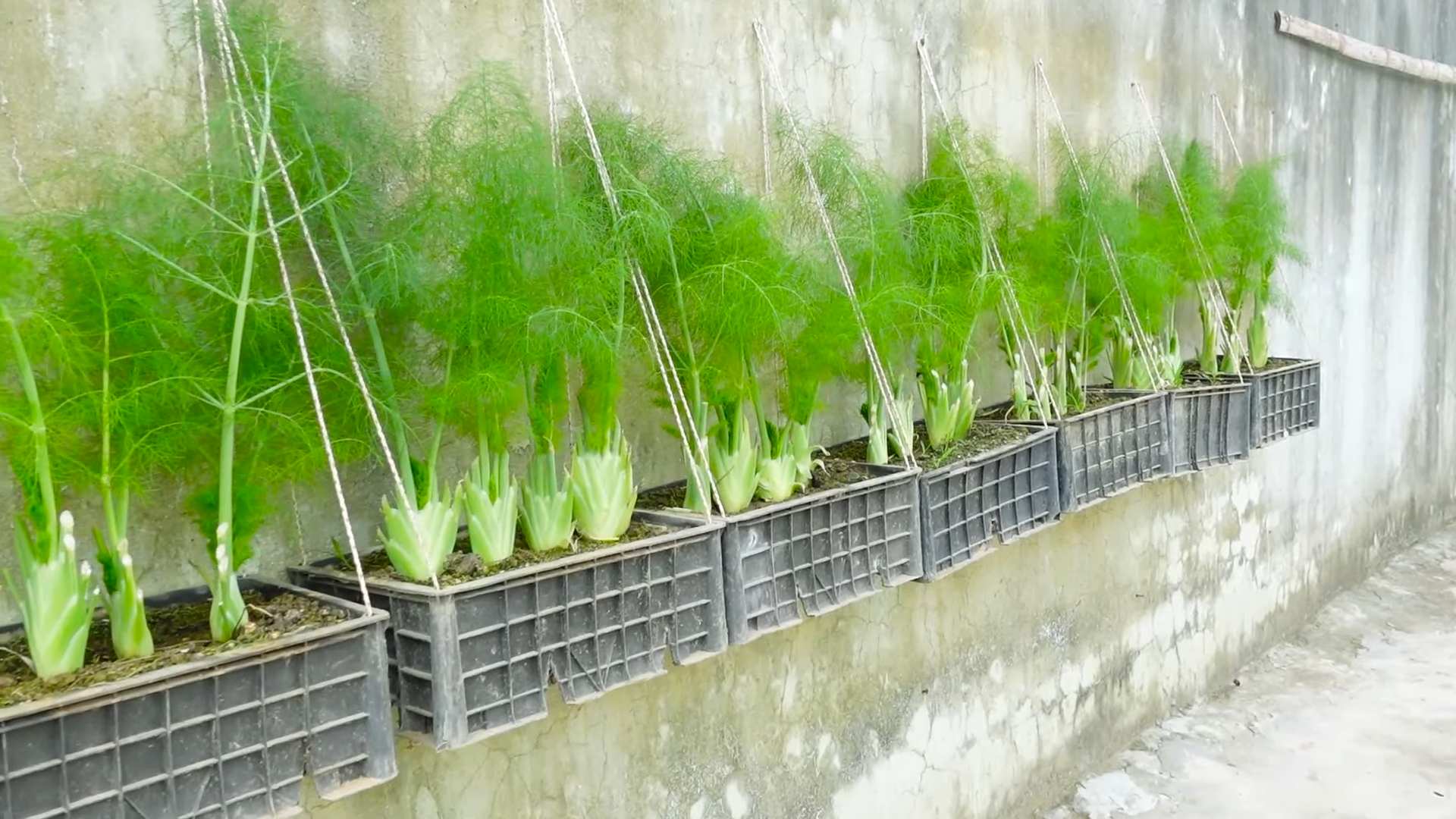
Growing Dill Indoors: A Comprehensive Guide
Hey there, fellow plant enthusiasts! Ever dreamt of having fresh, fragrant dill right at your fingertips, no matter the season? Well, you’re in luck! Growing dill indoors is totally achievable, and I’m here to walk you through every step of the process. Get ready to enjoy the delightful aroma and flavor of homegrown dill in your favorite recipes!
Choosing the Right Dill Variety
Not all dill varieties are created equal, especially when it comes to indoor growing. Some tend to get quite large, which isn’t ideal for a confined space. Here are a few of my favorite compact dill varieties that thrive indoors:
* Fernleaf Dill: This is a popular choice for indoor growing because it’s relatively compact and slow to bolt (go to seed). It has a beautiful, feathery appearance and a strong flavor.
* Dukat Dill: Another excellent option, Dukat dill is known for its intense flavor and aroma. It’s also relatively compact and easy to manage indoors.
* Bouquet Dill: While it can get a bit taller than Fernleaf or Dukat, Bouquet dill is still manageable indoors, especially if you prune it regularly. It’s a prolific producer, so you’ll have plenty of dill to harvest.
Gathering Your Supplies
Before we dive into the planting process, let’s make sure you have everything you need. Here’s a checklist of essential supplies:
* Dill Seeds: Choose a variety that’s well-suited for indoor growing, as mentioned above.
* Potting Mix: Use a high-quality, well-draining potting mix. Avoid using garden soil, as it can compact and hinder drainage. I personally prefer a mix that contains peat moss, perlite, and vermiculite.
* Container: Select a pot that’s at least 6 inches deep and wide. Dill has a taproot, so it needs enough space to grow. Make sure the pot has drainage holes to prevent waterlogging.
* Grow Lights (Optional but Recommended): Dill needs at least 6 hours of sunlight per day. If you don’t have a sunny windowsill, consider using grow lights to supplement the natural light.
* Watering Can or Spray Bottle: For gentle watering.
* Seed Starting Tray (Optional): If you prefer to start your seeds indoors before transplanting them to a larger pot.
* Fertilizer (Optional): A balanced liquid fertilizer can help your dill thrive, but it’s not essential.
Planting Your Dill Seeds
Now for the fun part! Let’s get those dill seeds planted.
1. Prepare the Potting Mix: Moisten the potting mix with water until it’s evenly damp but not soggy.
2. Fill the Container: Fill your chosen container with the moistened potting mix, leaving about an inch of space at the top.
3. Sow the Seeds: Sprinkle the dill seeds evenly over the surface of the soil. You can sow them quite densely, as you can always thin them out later.
4. Cover the Seeds: Gently cover the seeds with a thin layer (about ¼ inch) of potting mix.
5. Water Gently: Use a spray bottle or watering can to gently water the soil, being careful not to dislodge the seeds.
6. Provide Light: Place the pot in a sunny windowsill that receives at least 6 hours of direct sunlight per day. If you don’t have enough natural light, use grow lights.
7. Maintain Moisture: Keep the soil consistently moist but not soggy. Water when the top inch of soil feels dry to the touch.
Germination and Early Growth
Dill seeds typically germinate within 7-14 days. Here’s what to expect during this phase:
1. Monitor Germination: Keep an eye on your pot for signs of germination. Once you see tiny seedlings emerging, it’s a sign that your dill is off to a good start.
2. Thin Seedlings (If Necessary): If you sowed the seeds densely, you may need to thin them out once they’re a few inches tall. This will give the remaining plants more space to grow. Simply snip off the weaker seedlings at the soil line, leaving about 2-3 inches between plants.
3. Provide Adequate Light: Ensure your seedlings are getting enough light. If they’re stretching towards the light source, it’s a sign that they need more light.
4. Water Regularly: Continue to water regularly, keeping the soil consistently moist but not soggy.
5. Fertilize (Optional): If you choose to fertilize, start with a diluted solution of a balanced liquid fertilizer a few weeks after germination. Follow the instructions on the fertilizer label.
Caring for Your Indoor Dill
Once your dill plants are established, it’s important to provide them with the right care to ensure they thrive.
1. Light: Dill needs at least 6 hours of direct sunlight per day. If you don’t have a sunny windowsill, use grow lights to supplement the natural light. Position the grow lights a few inches above the plants.
2. Watering: Water regularly, keeping the soil consistently moist but not soggy. Allow the top inch of soil to dry out slightly between waterings. Overwatering can lead to root rot, so be careful not to overdo it.
3. Temperature: Dill prefers temperatures between 60-70°F (15-21°C). Avoid placing your dill plants near drafts or sources of extreme heat or cold.
4. Humidity: Dill doesn’t require high humidity, but it appreciates a slightly humid environment. You can increase humidity by placing a tray of water near the plants or using a humidifier.
5. Fertilizing: Fertilize every 2-3 weeks with a diluted solution of a balanced liquid fertilizer. Follow the instructions on the fertilizer label.
6. Pruning: Pruning is essential for keeping your dill plants healthy and productive. Regularly snip off the top growth to encourage bushier growth. You can also remove any yellowing or dead leaves.
7. Pest Control: Keep an eye out for pests such as aphids, spider mites, and whiteflies. If you notice any pests, treat them with insecticidal soap or neem oil.
Harvesting Your Dill
The best part of growing dill indoors is, of course, harvesting it! You can start harvesting dill leaves once the plants are about 6-8 inches tall.
1. Harvesting Leaves: To harvest dill leaves, simply snip them off with scissors or your fingers. Start by harvesting the outer leaves, leaving the inner leaves to continue growing.
2. Harvesting Seeds: If you want to harvest dill seeds, allow the plants to flower and form seed heads. Once the seed heads turn brown and dry, you can cut them off and hang them upside down in a paper bag to dry completely. Once the seeds are dry, you can separate them from the seed heads and store them in an airtight container.
3. Succession Planting: To ensure a continuous supply of fresh dill, consider succession planting. Sow new seeds every few weeks to have a steady harvest throughout the growing season.
Troubleshooting Common Problems
Even with the best care, you may encounter some problems when growing dill indoors. Here are a few common issues and how to address them:
* Yellowing Leaves: Yellowing leaves can be caused by overwatering, underwatering, nutrient deficiencies, or pests. Check the soil moisture and adjust your watering accordingly. Fertilize if necessary. Inspect the plants for pests and treat them if found.
* Leggy Growth: Leggy growth (long, spindly stems) is usually caused by insufficient light. Move your dill plants to a sunnier location or use grow lights.
* Bolting (Going to Seed): Bolting occurs when dill plants flower prematurely, often due to stress from heat or lack of water. To prevent bolting, keep the soil consistently moist and provide adequate shade during hot weather. Choose slow-bolting varieties like Fernleaf dill.
* Pests: Common pests of dill include aphids, spider mites, and whiteflies. Treat infestations with insecticidal soap or neem oil.
Enjoying Your Homegrown Dill
Now that you’ve successfully grown your own dill indoors, it’s time to enjoy the fruits (or rather, leaves) of your labor! Here are a few ideas for using your fresh dill:
* Add it to salads: Fresh dill adds a bright, herbaceous flavor to salads.
* Use it as a garnish: Sprinkle chopped dill over soups, stews, and other dishes as a garnish.
* Make dill sauce: Dill sauce is a classic accompaniment to fish and other seafood.
* Flavor pickles: Dill is a key ingredient in many pickle recipes.
* Add it to dips and spreads: Dill adds a refreshing flavor to dips and spreads like tzatziki and cream cheese.
* Make dill butter
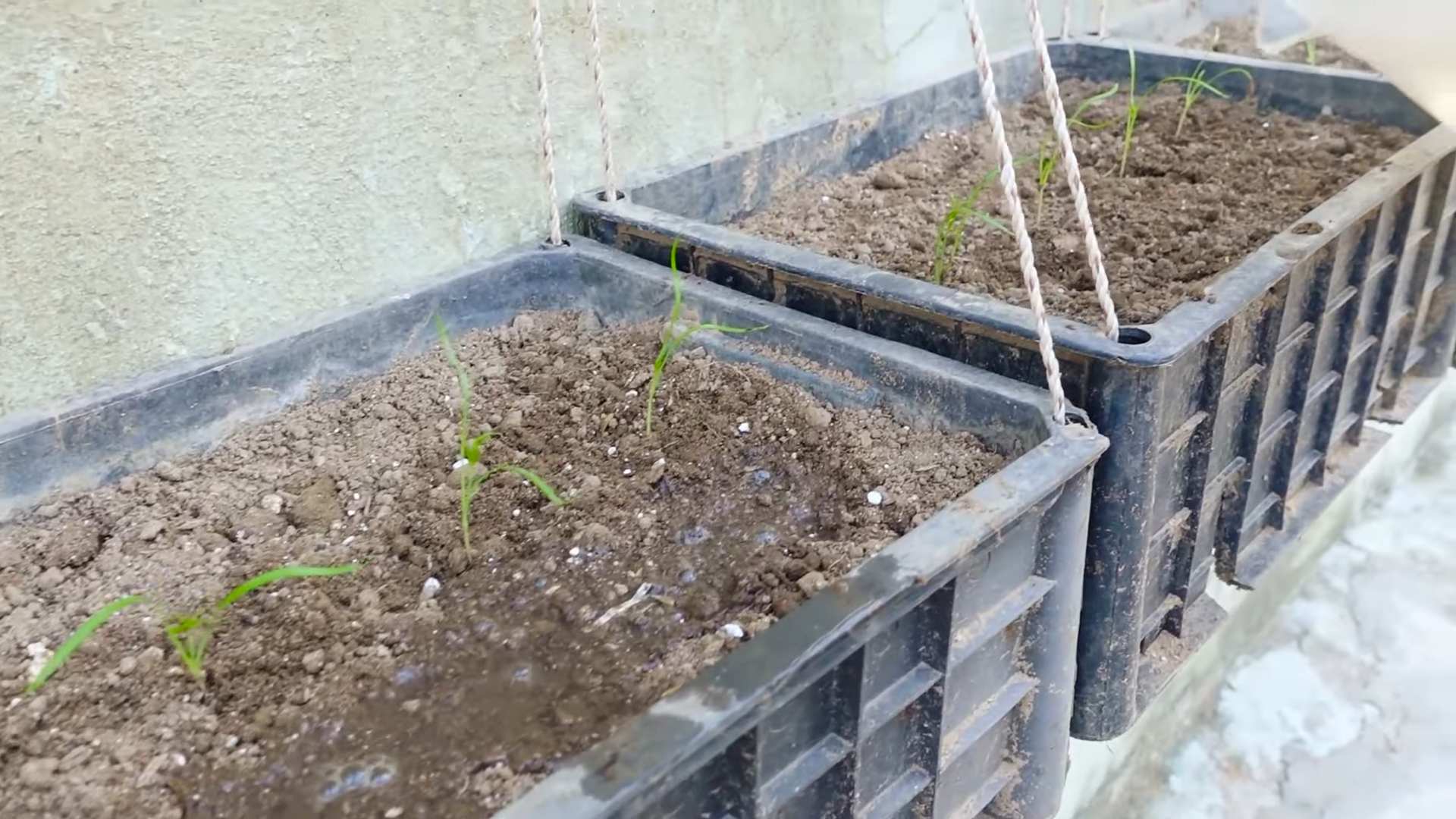
Conclusion
So, there you have it! Growing dill indoors is not only achievable, but it’s also a rewarding experience that brings the fresh, vibrant flavor of this herb right into your kitchen, year-round. Forget those sad, wilted bunches from the grocery store – imagine snipping fresh dill sprigs whenever you need them, adding a burst of herbaceous goodness to your favorite dishes. This DIY trick is a must-try for any home cook or gardening enthusiast looking to elevate their culinary creations and enjoy the benefits of fresh herbs regardless of the season.
Why is this a must-try? Because it offers a continuous supply of fresh dill, saving you money and reducing food waste. It’s also incredibly satisfying to nurture a plant from seed to harvest, connecting you to the natural world even within the confines of your home. Plus, the fragrant aroma of dill can subtly enhance your indoor environment, creating a more pleasant and inviting atmosphere.
But don’t stop there! Experiment with different varieties of dill to discover your favorite flavor profiles. ‘Bouquet’ dill is a popular choice for its high yield and robust flavor, while ‘Fernleaf’ dill is known for its compact size, making it ideal for smaller spaces. You can also try growing dill alongside other herbs like parsley, chives, and mint to create a miniature indoor herb garden. Consider using different types of containers, from terracotta pots to self-watering planters, to find what works best for your growing conditions.
For a fun variation, try using your homegrown dill to infuse olive oil or vinegar. Simply add a few sprigs of fresh dill to a bottle of high-quality olive oil or white wine vinegar and let it steep for a few weeks. The resulting infused oil or vinegar will add a delightful dill flavor to salads, marinades, and other dishes. You can also dry your excess dill by hanging bunches upside down in a cool, dark, and well-ventilated place. Once dried, store the dill in an airtight container for later use.
We wholeheartedly encourage you to embark on this indoor gardening adventure and discover the joys of growing dill indoors. It’s a simple, cost-effective, and incredibly rewarding way to enhance your cooking and bring a touch of nature into your home. Don’t be afraid to experiment, learn from your mistakes, and most importantly, have fun!
Once you’ve successfully harvested your first batch of homegrown dill, we’d love to hear about your experience! Share your tips, tricks, and photos with us in the comments below. Let’s create a community of indoor dill growers and inspire others to embrace this fantastic DIY trick. What are you waiting for? Get planting!
Frequently Asked Questions (FAQ)
What kind of soil is best for growing dill indoors?
Dill thrives in well-draining soil that is rich in organic matter. A good potting mix specifically formulated for herbs or vegetables is ideal. You can also create your own mix by combining equal parts of potting soil, perlite, and compost. The perlite helps improve drainage, while the compost provides essential nutrients for healthy growth. Avoid using garden soil, as it can be too heavy and may contain pests or diseases.
How much sunlight does indoor dill need?
Dill requires at least 6 hours of direct sunlight per day to thrive. If you don’t have a sunny windowsill, you can supplement with grow lights. Place the grow lights about 6-12 inches above the plants and keep them on for 12-14 hours per day. Rotate the plants regularly to ensure even exposure to light. Insufficient light can lead to leggy growth and reduced flavor.
How often should I water my indoor dill plants?
Water dill plants when the top inch of soil feels dry to the touch. Avoid overwatering, as this can lead to root rot. Ensure that the pot has drainage holes to allow excess water to escape. During the warmer months, you may need to water more frequently than during the cooler months. Check the soil moisture regularly and adjust your watering schedule accordingly.
What are some common pests and diseases that affect indoor dill?
Aphids, spider mites, and whiteflies are common pests that can infest indoor dill plants. Regularly inspect your plants for signs of infestation, such as small insects, webbing, or sticky residue. Treat infestations with insecticidal soap or neem oil. Root rot can also be a problem if the soil is too wet. To prevent root rot, ensure that the soil is well-draining and avoid overwatering. Good air circulation can also help prevent fungal diseases.
How do I harvest dill from my indoor plants?
You can start harvesting dill leaves once the plants are about 6-8 inches tall. Simply snip off the leaves with scissors or pruning shears. Avoid removing more than one-third of the plant at a time, as this can stunt its growth. Regular harvesting encourages the plant to produce more leaves. You can also harvest the dill seeds once the flowers have dried and turned brown.
Can I grow dill from seed indoors?
Yes, growing dill from seed indoors is a great way to start your indoor herb garden. Sow the seeds directly into the potting mix, about ¼ inch deep. Keep the soil moist but not soggy. The seeds should germinate in about 7-14 days. Once the seedlings have developed a few sets of true leaves, thin them out to allow for proper spacing.
How long does it take for dill to grow indoors?
From seed to harvest, dill typically takes about 6-8 weeks to mature indoors. However, this can vary depending on the growing conditions, such as light, temperature, and humidity. With proper care, you can enjoy a continuous supply of fresh dill throughout the year.
What is the ideal temperature for growing dill indoors?
Dill prefers temperatures between 60-70°F (15-21°C). Avoid placing the plants near drafts or heat sources, as this can stress them. Consistent temperatures will promote healthy growth and flavorful leaves.
Can I transplant dill seedlings outdoors?
Yes, you can transplant dill seedlings outdoors once the weather has warmed up and the risk of frost has passed. Harden off the seedlings by gradually exposing them to outdoor conditions for a week or two before transplanting. Choose a sunny location with well-draining soil.
How do I encourage bushy growth in my indoor dill plants?
Pinching back the growing tips of the dill plants can encourage them to branch out and become bushier. This also helps to prevent the plants from becoming leggy. Simply snip off the top inch or two of the main stem. Regular harvesting will also promote bushy growth.

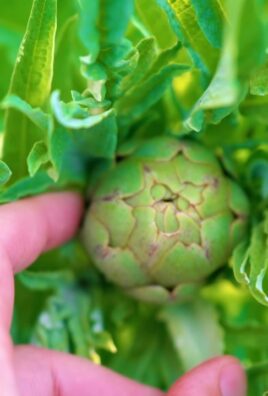
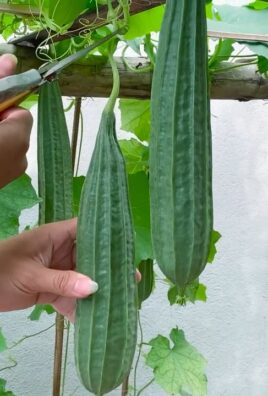
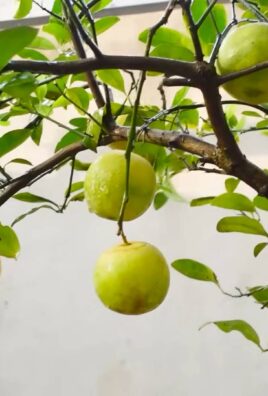
Leave a Comment